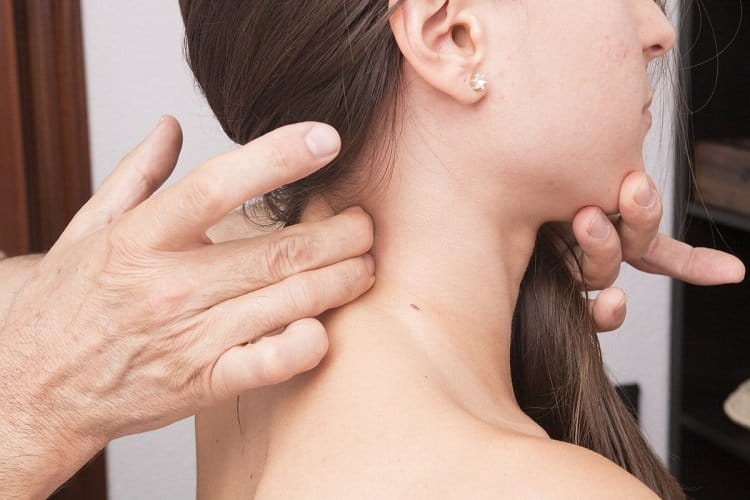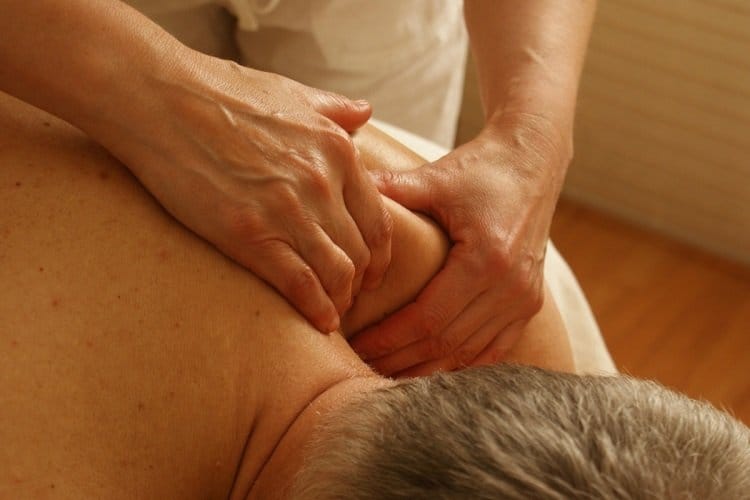Do you feel like the muscles in your neck and back are in a constant state of being strained, tight, or knotted? You’re not alone. In fact, the American Academy of Pain Medicine reports that low back pain and neck pain are two of the most commonly reported chronic pain symptoms in the U.S. For a better understanding of what muscle knots are exactly and how they affect your nerves and pain levels, don’t miss this quick guide:
What is a Muscle Knot?
Imagine zooming in on the microscopic composition of a muscle. What would you find? At the very foundational level, protein molecules like myosin and actin. As these protein molecules group together, they start to form strands called myofilaments; some are thick and some are thin. In an over and underlapping pattern, these myofilament strands form sarcomere which themselves are then laid together end to end to form myofibrils.

Myofibrils get bundled up in the tens of thousands to make the muscle fibers, first fasciculi then fascicles, which finally give you the striated strands of tissue you have come to recognize in blue and red anatomical maps of the human skeletal system. Complex, strong, pliable, and reactive, muscle fibers enable much of the strength and flexibility you use on a daily basis.
Sometimes, however, tight muscle fibers can become stiff and twisted up to a point that they are no longer able to stretch, relax, or release. This is known as a muscle knot or a myofascial trigger point. Because the natural pliability and lengthening functions of the muscle fibers are overtaken by hyper-tense stiffness, the muscle fibers start to lose blood flow which means critical nutrients and oxygen stop making their way to them.
What Are the Symptoms of Muscle Knots?
You’ve likely complained of having a muscle knot in your back or neck at some point. In addition to soreness and pain, the affected muscle may also give off warmth and feel tender and painful to the touch. Muscle knots often feel, well, knotty, like a tough lump in the muscle itself. Muscle knots can be tiny like the size of a pinhead or much larger like the size of a marble or your thumb.

Occasionally you may feel referred pain from a muscle knot which means that it presents as discomfort and or pain outside of the muscle itself. For example, a headache could actually be caused by a muscle knot in your neck. Some chronic disorders, like myofascial pain syndrome, involve chronic trigger point pain and muscle inflammation.
How Do Muscle Knots Affect Nerves?
Some researchers believe that waste by-products start to build up in and around the knots, seeping toxins into the tissues and exacerbating symptoms. Because muscle knots do not typically show up on actual imaging scans of muscles, however, new research indicates that the problem might be more neural than physical; researchers believe nerve ending irritated by something happening in your muscle tissue sends pain signals up to the brain.
In other instances, however, a tense muscle can actually physically pinch a nerve causing fairly intense, radiating pain, weakness, numbness, and burning or tingling sensations. This is common in the back, neck, and shoulders area and is typically relieved with rest, alternating ice and heat therapy, muscle relaxers, and massage.
Read more on Yoga for Sciatica, Soothe Sciatic Nerve Pain with the Staff Pose, Locust Pose, Pigeon Pose and More
What is the Best Way to Get Rid of Muscle Knots?
For everyday muscle knots, there are a handful of pharmaceutical-free ways to get rid of them:
Massage – a targeted deep tissue massage of key trigger points can play a significant role in helping to break up tight muscle and fascia tissue, boost circulation, and release tension.

Foam rolling and stretching – foam rolling is a type of self-myofascial release that involves rolling the body’s trigger point and adjacent muscles and tendons over a dense, foam cylinder. Frequent stretching, especially before and after physical activity, can also help keep muscles pliable, loose, and knot-free.
Ice and heat therapy – alternating ice therapy with heat therapy can help numb spasming nerve endings to relieve painful symptoms and then boost blood flow and foster muscle relaxation to help a knot break up.
Electrical stimulation – low-impulse electrical stimulation, like with a TENS unit, can temporarily relieve pain associated with muscle knots by stimulating nerve pathways and diminishing pain signals.
Limiting repetitive activities – you can address (and prevent) muscle knots associated with a physically demanding job or hobby by limiting the repeated motions that strained your muscles in the first place and taking more frequent breaks when you are engaging in those repeated activities.

Practice better posture – poor posture habits like slouching, slumping, hunching over, and craning your neck past your shoulders can lead to muscle and joint strain that leads to knot formation.
Read more: Middle Back Pain – Causes, Risks and Effective Stretches

